The distinguishing point between professionals and inexperienced is capturing crisp, explicit audio and high-quality videos. The shotgun mic is the key with its high directionality and more comprehensive sensitivity range to pick crystal clear sound. These microphones have become the industry standard for production, recording, and broadcasting with their precision and clarity.
What is a shotgun mic?
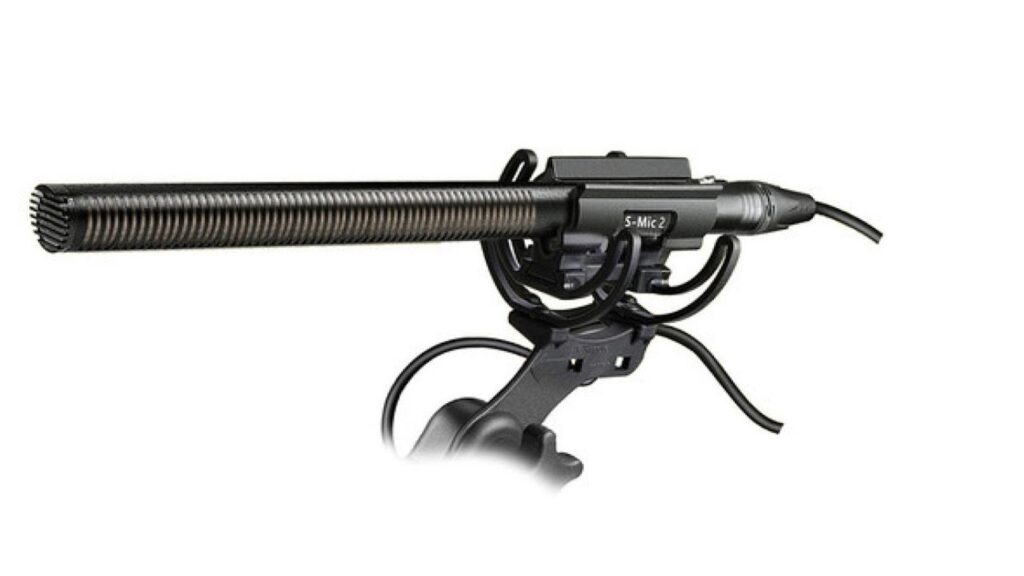
Shotgun microphones are directional polar pattern mics that pick required sounds with ultra clarity while rejecting the surrounding noises. These high-sensitive unidirectional mics are concentrated on the sound source without getting interrupted or interfered with.
So, they are ideal for noisy environments and eliminate the need to check whether microphone picking is quality. The name shotgun is derived from the “barrel of the shotgun,” enabling the mic to pick up sound directed at the point source.
With shotgun polar patterns, pointing the microphone toward the voice source is accessible according to its reference point. The 0⁰ reference point has a maximum gain of -11 dB and faces directly to the sound source. However, with opposite directions, such as 180⁰, it reduces to -28 dB because it reduces with every diverted angle.
How do shotgun mics work?
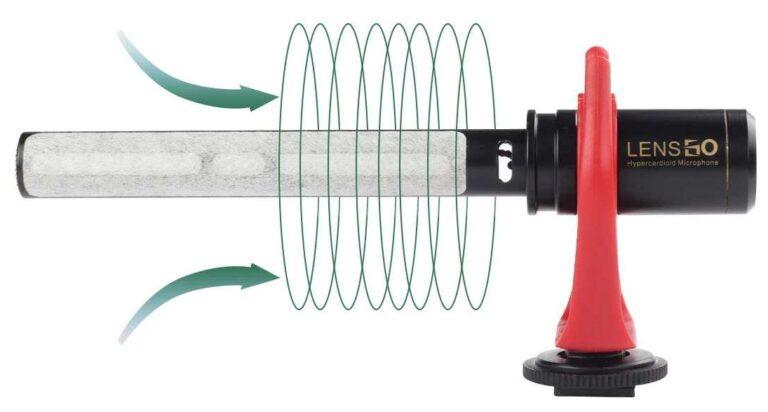
Shotgun microphones have tight polar patterns and work on the “waveform interference” principle. However, there are compromises associated that must be intelligently addressed to ensure that the mic working smoothly. These mics are focused on two prominent technologies: Supercardioid polar pattern and Interference Tube.
Supercardioid Polar Pattern
Every shotgun mic has a directional capsule with a long hollow interference tube attached to its end surface. The capsule’s further arrangement increases the reverberant ratio, but the mic can overcome this with ultra-directionality.
Interference Tube
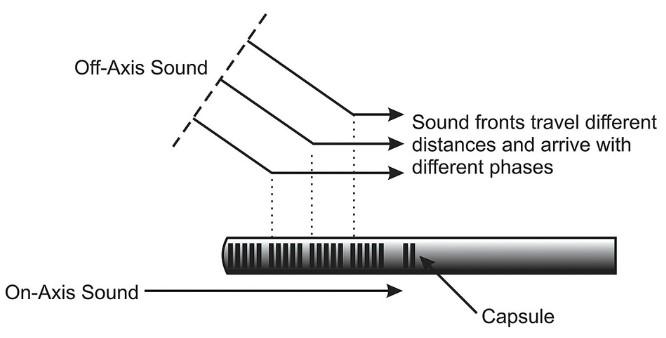
The interference tube is behind the unidirectionality and successfully removes surrounding noises with a focus on the direct source.
- On-axis
Desired, on-axis or direct source sound will pass uninterruptedly from the capsule to the diaphragm.
- Off-axis
- However, the interference results from different slots or entry points at the end of the mic tube.
- These slots serve as a unique entry point for the off-axis that can enter the diaphragm from other places.
- The surrounding noises will enter from different angles, and the distance will vary according to their entry points.
- Each slot is at a different angle, so these off-axis sounds phase out and tend to cancel each other.
Consequently, on-axis sounds are enhanced, and off-axis are attenuated relative to the on-axis. It is why shotguns are called “interference tube” mics, and their polar pattern is narrower from the front surface.
Also, the cancellation of off-axis sounds depends on the length of the tube, angle of incidence, wavelength of sounds, and the slot spacing. Specifically, the wavelengths below 2 kHz will be unaffected regardless of their directionality.
Limitations
Shotgun microphones have limitations when there are many interactions of off-axis sounds and become colored “changed.” These limitations are often due to the following reasons:
- The sound varied effect is prominent when the microphone moves during the recording.
- Shotgun mics tend to work at higher frequencies and are ineffective during the mid or lower range of frequencies.
- Due to the shotgun unidirectionality during the desktop recordings, providing on-axis sounds takes a lot of work.
So, shotgun mics work best when there is a significant difference between off-axis and on-axis sounds. However, in a closed environment, both off and on-axis become similar, which makes it challenging to analyze the difference.
The longer mics are more sensitive but cannot effectively remove surrounding noises. Also, short shotgun mics are less directional but more focused on eliminating off-axis sounds efficiently.
Polar pattern of the microphone
The mic’s polar patterns result from the interference tube’s ability to discriminate between on and off-axis sounds. The on-axis arrives simultaneously as “in-phase,” while the off-axis has different paths and frequencies as “out of the phase.”
The polar patterns are “frequency-dependent relationships,” which means the higher the frequency, the tighter will be the directional pattern.
- Supercardioid Pattern
This higher sensitive polar pattern has a narrow pickup range and efficiently rejects off-axis sounds. Due to their sensitivity, the operator must be silent and focused on the source because of its rear pickup.
- Hypercardioid Pattern

The Hypercardioid pattern has a directivity index (DI) of 6 dB, ensuring a smooth polar response at higher frequencies. So, the Hypercardioid has a narrow pickup pattern, and frequency directionality depends on the microphone’s length.
Also, the polar response plot provides complete insights into mics gains with different points of sound source. With 0⁰ reference point, the sound source is perfectly aligned, and the mic maximum gain is -11 db.

However, with an opposite 180⁰ of sound source, the microphone’s gain will be -28 db. These gain patterns show mics sensitivity when the sound source is precise, and sensitivity decreases with deviation.
How are shotgun microphones used?
Generally, shotgun microphones can pick up sound from three to four feet, and some can pick up sound from up to ten feet. The interference tube determines the mic pickup angle, which means the narrower the interference tube, the shorter its pickup angle.
The mics can be mounted on the camera to record the moving subjects or placed on the boom pole. The boom microphones must be close to the sound source because they cannot amplify the recordings.
Before using mics, follow these essential steps:
- Mic must point directly toward the sound source
- It should be at the maximum possible distance for ultimate pickup
- If the boom mic is too far away, the sound will be unclear; if it is too close, it will pick up surrounding noises.
The sound amplification depends on the recorder and amplifiers, and the mic ensures crystal-clear sound afterward. Also, the microphones are mounted with wind covers to avoid substantial interference when recording in wind areas.
By installing the mic on your camera or mounting it on a boom pole, using the shock mounts will reduce the handling noises. It’s easy to work with shotgun microphones, but ensuring their directional pattern is critical.
Types of Shotgun microphones
The trio of shotgun microphones has become the industry standard with their high-directional pickup from the sound source. Shotgun microphones work on the principle of the direction of the wavelength of sounds and its strength.
For efficient working ability, shotgun mics are divided according to their sensitivities, and choosing the best depends on the working capacity.
Short shotgun microphones
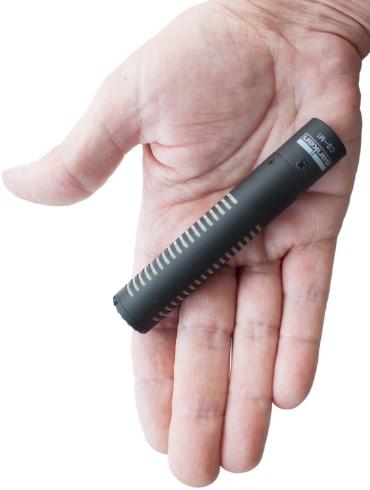
These microphones have short interference tubes mounted on the cameras and are better for close shootings. Also, the mics are more directional and precise, with their shorter pickup range of up to 4 feet.
The short shotgun mics are a better alternative to Lavalier but cannot reject surrounding noises effectively. Therefore, these mics are best suited for cameras or smartphones to enhance their pickup pattern.
The short shotgun is perfect for interviews or documentaries with its precision and sound clarity. The short interference tube makes it ideal to capture close voices without distraction.
Medium shotgun mics
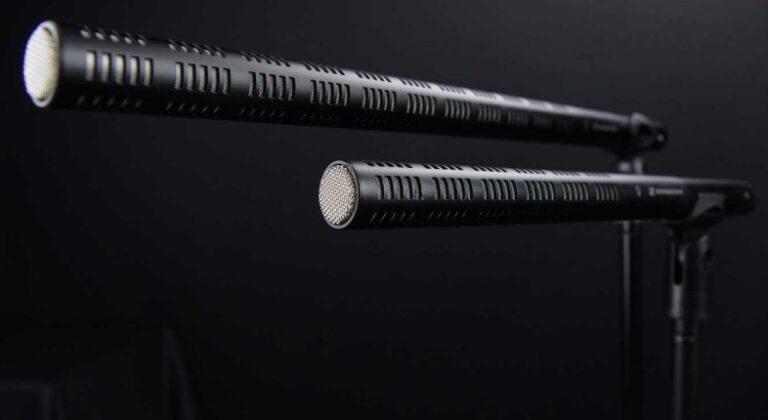
They are also known as “XLR shotgun mics” because most mics require XLR for power and are more directional than short microphones. The medium mics are perfect for movies or dramas because they pick sounds from six feet.
These mics are perfect for outdoor recordings, ensuring quality audio pickup from a wider distance. The long interference provides the benefit of capturing ultra-clear audio for films or dramas. Also, it’s perfect for directing and rejecting noises than other microphones.
Long shotgun microphones
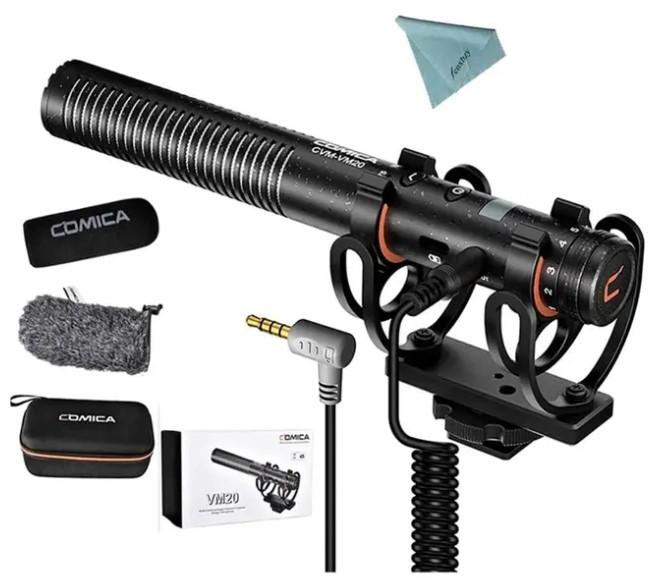
Their longer interference tube, strict pickup pattern, and better range are behind the perfect quality audio. These microphones have a more extended range and are best suited for outdoor recordings due to their higher sensitivity.
They are also known as “super shotgun mics” favored among professionals for their efficient recording. They can precisely isolate the sound source from the noises with their versatility. It makes the super shotgun essential with its gain controls and low-cut filters.
Note: The pickup pattern is determined by the length of the interference tube, which means the longer the mic, the shorter its angle. So, longer mics are sensitive with their pickup directionality, while short shotguns are perfect in rejecting off-axis sounds.
How to choose a Shotgun microphone?
Shotgun microphones are exceptional with their higher sound pickup from the directed source and reject surrounding noises. These mics vary according to type, length, or individual-specific requirements. However, there are a few simple requirements to consider to elevate your recording experience.
- Mounting of shotgun microphones
Specifically, shotgun microphones have two types of mounting requirements according to their usage. These mics can be linked directly with cameras or mounted on the boom pole for better pickup range.
- Camera top shotgun mic
Shotgun mics can be mounted with camera audio input because they have good sound quality during live events. Camera top shotguns provide excellent audio quality when shooting is on the go or when there is insufficient shooting space for the microphone.
- Mounting on the boom pole
Camera-mounted shotguns need to be closer to the sound source, which is difficult during recording the interviews. The mics are placed on a boom pole and directed towards the sound source. A professional boom operator must capture the desired sound and remain unaffected by the surrounding noises.
- Type of shots
With the trio of shotgun microphones, you can record your shots depending on the specific requirements. Short shotgun mics with higher pickup angles are perfect for indoor or close-up shots. However, long shotguns are the preferred choice of professionals because of their high directionality and precision.
- Polar Patterns
The shotgun mics polar pattern varies because of their higher directionality and sensitivity. The long tube mic has a strict pickup angle, and short microphones have an enlarged angle, so choose the best that suits your workings.
- Recording Environment
Due to their diversity and higher compatibility, shotgun mics can be used for indoor or outdoor recordings. Short-interference tube microphones are used for indoor interviews because of their higher directionality.
For outdoor recordings, more extended tube microphones provide exceptional results during movie production. These mics are susceptible and require proper care during handling and recording.
- Budget
The most critical factor is the budget before selecting the shotgun microphones. Generally, short shotgun mics are budget-friendly, and long microphones are expensive because of their professional use.
What is the range of shotgun microphones?
The range of the shotgun is longer than the traditional microphones, and it depends entirely on the length of the interference tube. Generally, the practical range of the mics varies between four to ten feet.
Short shotgun mics are less directional and can pick up surrounding noises, so they must stay close to the source. However, longer mics are better at rejecting off-axis sounds but work best when staying close to the sound. These mics are sensitive with their positioning and require skilled operators for this.
The maximum mic and source distance must be within four feet, with the microphone’s head pointing at the source. So, the shotgun’s pickup range changes with their polar patterns, making super-cardioid perfect in rejecting surrounding noises.
These microphones have an efficient pickup range, but moving the mic will attenuate the sound source.
Applications of shotgun microphones
Shotgun microphones are exceptional with their high directionality and diverse with on-axis sound pickup. These mics are the perfect alternative with broader field applicability and are used for different recordings.
- Outdoor Recordings
Shotgun microphones with long interference tubes are ideal for recording or presenting from different locations. Because of this, these mics are used for wildlife recordings because they can eliminate noises and capture crystal clear sounds.
- Live Broadcasting
For news reporters and broadcasters, long-tube shotgun mics are professional and sound. The microphones can work efficiently in noisy environments by ideally eliminating the surroundings. The high-directional polar pattern will pick up sounds from the source and reject the interrupting sounds.
- Interviewing
The shotgun points directly toward the source by focusing on a specific subject’s sounds, recording clear sounds. The microphone’s unidirectional focus ensures exceptional sound pickup from noisy airports or train stations. Also, it removes unwanted noises with precision and helps in post-production editing by differentiating the required sounds.
- Film and Television
The long tube shotgun microphones have become the industry standard for clearly capturing film dialogues. The mics can also capture sound effects for movies or dramas with precision.
- Instrument Recordings
The shotgun’s long interference tube microphones record high-quality and precise instrument sounds for songs. These mics can also pick the crunchy sound of instruments during live performances with their distinct directional patterns.
Shotgun microphones enhance the value of your audio recordings because these mics can work under any conditions. However, focusing the mic head directly toward the source is essential for better results.
What are the advantages of using the shotgun mic?
The shotgun microphones are professional audio recording tools with their versatility and diversity. These mics are used for capturing unidirectional sounds with higher precision without capturing interfering noises. Besides this, the microphones have additional functions described hereunder in detail.
- High Directionality
The microphone’s narrow and focused pickup pattern makes these mics perfect for capturing sounds from the source. Also, their unidirectionality captures sounds from desired angles and differentiates voices on frequency. With this, shotguns will accept the desired and reject unwanted sounds ideally.
- Rejecting handling noises
Along with surrounding noises, the microphone is equipped with shock mounts to minimize or eliminate the handling noises. It’s essential to record crystal-clear sounds during moving shots of films.
- Flexible mounting
Shotgun microphones have flexible positioning to capture high-quality sounds and can be mounted on boom poles, camera rigs, or stable stands. The mics’ highly directional pattern needs the sound source to be at a perfect distance to avoid sound lags.
- Long range pickup
Because of the microphone’s unidirectional and narrower pickup angle, the mics can capture the sounds from far distance. Precisely, long interference tubes can capture sounds from up to ten feet, making them exceptional for crisp film or drama productions.
- Power supply
The shotgun microphone can be powered with phantom power for efficient and professional recordings. The phantom power can be supplied from any source, making it perfect to capture quality sounds. However, few shotgun mics work on batteries to record shots when phantom power is unable.
- Saves post-production editing time
The precise and natural-sounding recordings are obtained with microphone high directionality and rejecting surrounding noises. The mics also differentiate between sound sources and interfering voices, reducing the editing time.
- Isolated and professional audio quality
The microphone works on differentiating the sound frequencies and perfectly isolates desired sounds. It makes shotgun mics perfect for outdoor films and movie production because it separates and eliminates surrounding noises.
What are the disadvantages of using the shotgun microphone?
The shotgun mic’s unidirectional pattern is advantageous in producing crisp and crystal-clear recordings. However, some drawbacks must be considered before choosing the right microphone for specific functions.
- Wind Sensitivity
Shotgun microphones are susceptible to the wind because the wind can interfere with regular recordings. It’s best to use wind furry shields during outdoor recordings to reduce the noise impact and capture clear audio.
- Narrow pickup angle
The high directionality of the shotgun microphone is exceptional in isolating the desired sounds from interfering noises. Also, the longer interference tube has a narrower pickup angle and is efficient only for single-source recordings. These microphones cannot capture sounds from different sides during meetings or conversations.
- High cost
These microphones work on a high-directional principle, making them costly compared to other mics. Their expensive models provide high quality and are required among professionals, but these mics are not for beginners.
- Handling Challenges
Shotgun microphones are bulkier and longer tube mics, which become challenging when recording in tight spaces. In addition, they may come between the camera frames, affecting the overall video quality.
Shotgun microphones are professional audio recording tools with higher precision and crisp sound quality. The drawbacks provide complete insight into the microphone and enable you to make uniform decisions.
Difference between shotgun and Lavalier microphone
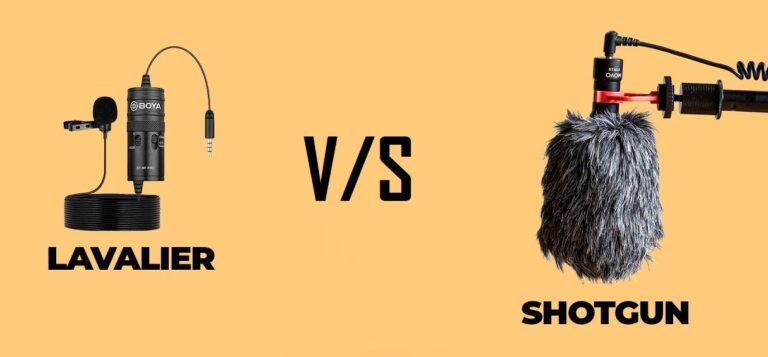
Shotgun and Lavalier microphones are valuable in Excel audio recordings with precision and clarity. So, these mics are exceptional in capturing high-quality audio, making them great for interviews and dialogues. However, along with their similarities, there are differences when used.
- Lavalier microphones
Lavalier (lapel) microphones have a perfect signal-to-noise ratio because of their omnidirectional pattern and sensitivity. Due to their proximity, it’s ideal for subjects to move freely by placing them close to the source.
These lapel mics can be connected wirelessly or via a 3.5mm audio jack for directly recording videos. So, these microphones are perfect for shooting or recording interviews with excellent audio quality.
- Shotgun Microphones
Shotgun microphones have strict pickup angle, but it provides versatility with their diverse form factor. These mics offer an excellent natural-sounding experience due to their high directionality. The microphone works unidirectionally by perfectly capturing the source and eliminating the need to hide microphones during production.
Conclusion
Shotgun microphones enhanced the digital auditory possibilities by recording crisp, clear sounds and rejecting side noises. The interference tube excels the recordings by capturing the sounds with their versatility and higher compatibility.
The microphones have highly directional patterns, making them an excellent choice for professionals. Therefore, these microphones are perfect for capturing dialogues and interviews and isolating the interfering noises. These mics have certain limitations, and overcoming them brings an additional advantage.
So, in the filmmaking industry, where precision and clarity are paramount, shotgun mics purify the quality by providing auditory excellence.
While shotgun mics are great for directional audio capture, sometimes you need greater freedom of movement, especially when filming dynamic scenes or interviews. For those scenarios, a wireless lavalier microphone can offer clear, consistent audio without restricting your mobility.

































.png)




